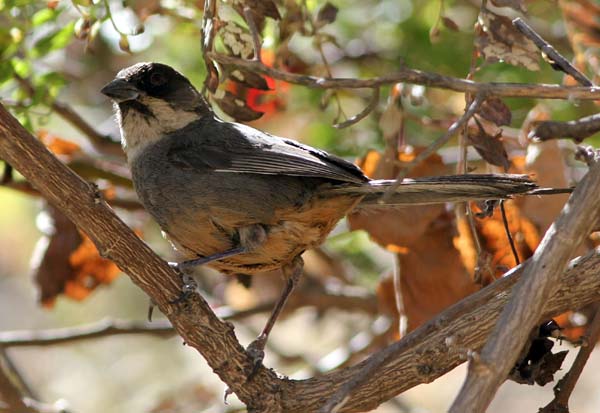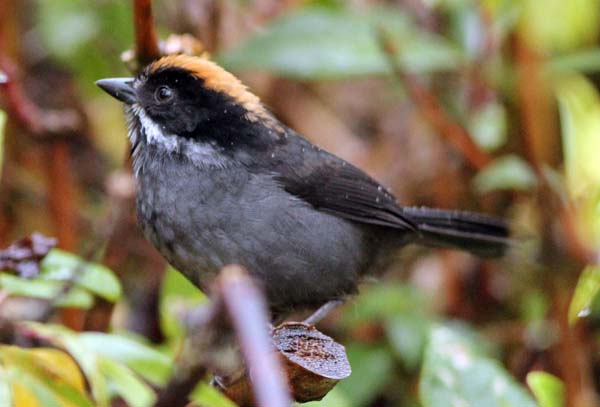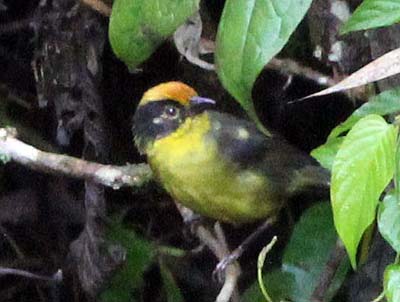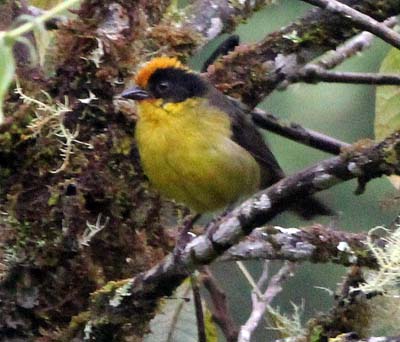The Brush-Finches of Central Peru
I’ve just completed a quick scout of the central Peruvian Andes and enjoyed the diversity of Atlapetes Brush-Finches in the region.
I had one miserably rainy day to try for the rare and local Black-spectacled Brush-Finch, but the poor roads, occasional torrents, and being delayed by an almost unending mixed flock with three species of mountain tanagers, dacnises, flowerpierces, conebills, and a pair of very territorial Eye-ringed Thistletails (more on these birds in another blog post) were not a recipe for success. That one will have to wait until the next trip.
The first brush-finches I came across were the rather plain but still interesting Rusty-bellied Brush-Finches of the dry but rich, scrubby slopes of the west-facing slopes just a couple hours from Lima. They associated with the many Mourning Sierra-Finches, Plain-colored Seedeaters, and Rusty-crowned Tit-Spinetails.
Then in the cloud forests of the department of Junín – in the upper slopes of the now famous Satipo River Vallley – one comes across the confiding and beautiful Slaty Brush-Finch. Where you find these, you might also come across Moustached Flowerpiercer, White-banded Tyrannulet, and Buff-breasted Mountain-Tanager.
Then the fourth species of Atlapetes on my route – in the town of Calabaza, the heart of the newly named Colibri Trail – was what the range maps say must be Tricolored Brush-Finch. But if you were to just picture-match with the illustrations in the Birds of Peru, these skulkers of the forest edge look much more like Yellow-breasted Brush-Finch (once part of Rufous-naped Brush-Finch) than the pictured Tricolored Brush-Finch, which has a yellow crown the same color as the breast. Unfortunately, there is no written description of Tricolored Brush-Finch in the field guide, so there’s no indication of any variability in the species that might include what we see here. And the newish Ridgely and Tudor passerines book also indicates that Tricolored has a yellow crown, though it’s not pictured. So, barring what the range maps depict, and given that brush-finch taxonomy and distribution are both not fully understood, why are these not Yellow-breasted Brush-Finches? Maybe some song analysis might show something interesting. Comments welcome.


Too bad about the Black-spectacled Brush-Finch. As you say next time! Hope all worked well in Calabaza. I am going to meet the girls this week. Tricolored is not well depicted in Birds of Peru. It does have a golden orange crown like your pic.
BTW. Slaty BF ssp taczanowskii in central Peru is a good species – that is not yet published as such. DNA was done in a published paper, but the authors did not take full leap to call it. Later studies (not yet published) confirmed species status (pers comm).
Looking forward to the next post.
The crown on your birds is within range of Tricolored. The crown is never concolor with the chest but it can be close. The most common is that the frontal part is mustard yellow changing to lighter, more whitish-tinged towards the nape. There is a level of individual variation in the exact hue as described in a single sentence in the old Birds of the High Andes (Fjeldsa and Krabbe 1990): “yellow to ochraceous orange crown”. The bird on the photo doesn’t really match any of the subspecies of the Yellow-breasted that are found in regions in more-or-less proximity to Junin (latinuchus, baroni, terborghi). Both latinuchus and terborghi can be excluded on their relatively dark crown alone and add to that the large white wing speculum of latinuchus. Only baroni can have near-identical crown color but it has distinct yellow lores.